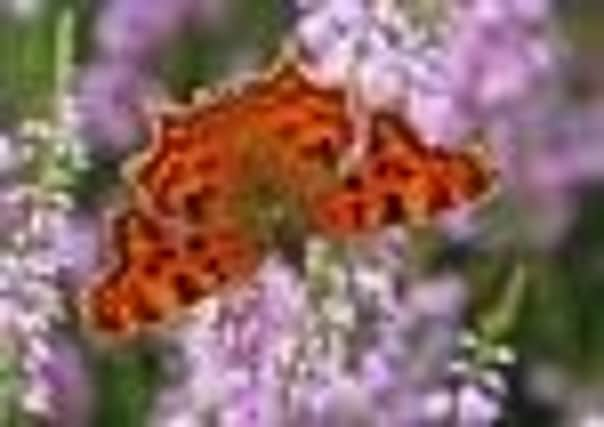Butterfly boom for Borders as English species flutter north


The increase in the number of butterflies in Scotland is in marked contrast to the rest of the UK, where populations of some varieties have continued to decline over the past decade.
The report, The State of the UK’s Butterflies 2011, by wildlife charity Butterfly Conservation and the Centre for Ecology and Hydrology, reveals that the total number of common and widespread butterflies in England fell by a quarter in ten years while in Scotland numbers increased by 11 per cent over the same period.
Advertisement
Hide AdAdvertisement
Hide AdExperts say the differences are due not only to the changing climate, but to Scotland’s relatively unspoilt landscape.
The star player making the most dramatic appearance in the Borders is the Comma, an orange and brown butterfly with scalloped wings and a small but distinctive silver comma-shaped marking on its undersides.
Richard Fox, survey manager for the charity, said a number of species were coming to Scotland, but the Comma was a leading example.
“The Borders are the first port of call for butterflies heading north. The Comma is big success story and a particularly striking example because it hadn’t been recorded in Scotland for about 150 years until a decade ago.
“The south of Scotland and the north of England have never had it so good for butterflies. As well as the Comma, the Speckled Wood, Orange-tip, Holly Blue and Small Skipper can now usually be seen in the back garden or while out walking the dog.”
Mr Fox added that butterflies are regarded as the “canaries in the coalmine” for the environment – an indicator species with serious declines possibly representing a wider UK insect bio- diversity crisis.
It is the first time that a ten-year assessment of both species distribution and population changes has been possible for butterflies in the UK.
However, the report said not all varieties were doing well in Scotland, with the some specialist species, such as the Pearl- bordered Fritillary, still declining.
Advertisement
Hide AdAdvertisement
Hide AdHabitat specialists need special places to thrive, such as ancient woodlands and unimproved grassland – locations that are increasingly under threat from intensive farming methods, but less so in Scotland.
Paul Kirkwood, director of Butterfly Conservation Scotland, said one of the country’s most important species, the Marsh Fritillary, was doing well.
Although it had previously been lost from large parts of Scotland, its decline has reversed in recent years and it has expanded from its stronghold in Argyll.
“This is possibility due to weather and to grants from the Scottish Rural Development Plan, which has specifically supported livestock grazing in woodland which creates good habitats for these butterflies,” he said.
The Scottish Government recently announced £30.5m grant under its Rural Priorites Scheme for a range of projects supporting biodiversity.
A spokeswoman said: “The funding clearly demonstrates our commitment to protecting the vulnerable flora and fauna that inhabit Scotland’s rural areas and safeguarding our natural habitats for generations to come.”